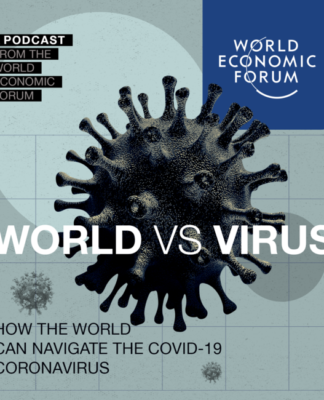PLASTICS AND THE ENVIRONMENT
Plastic fibres are stunting growth in mussels by more than a third – here’s why that matters
Mar 29, 2023
This article is published in collaboration with
The Conversation
Tiny pieces of plastic litter have a harmful impact on marine animals, including mussels.
Image: REUTERS/Jose Manuel Ribeiro
Chris Walkinshaw
PhD Candidate, Plymouth Marine Laboratory
Share:
OUR IMPACT
What’s the World Economic Forum doing to accelerate action on Plastics and the Environment?
THE BIG PICTURE
Explore and monitor how Plastics and the Environment is affecting economies, industries and global issues
CROWDSOURCE INNOVATION
Get involved with our crowdsourced digital platform to deliver impact at scale
Stay up to date:
Plastics and the Environment
Microfibres account for up to 91% of the microplastics that float around our seas.
In a new study, researchers in Plymouth found that prolonged exposure to polyester microfibres led to smaller mussels that grew at a slower rate.
Mussels, as part of a group of shellfish called bivalves, are an important part of marine food security.
Reduced growth rates in mussels could affect the wider ecosystem, reports The Conversation.
Plastic pollution poses a threat to marine wildlife. The plastic bags, bottles and straws that we see strewn across beaches have long been identified as a danger. But tiny fragments of plastic – called microplastics – that are less than 5mm in size are also a major source.
Microfibres are the most common type of microplastic and account for up to 91% of the microplastics that float around our seas. These minuscule fibres are shed from textiles as a result of the wearing and washing of clothes, and from the weathering and abrasion of marine equipment.
Marine animals will encounter and even consume these microplastics. Shellfish, which feed by filtering organic particles from the water, are particularly vulnerable. One study found that shellfish ingest far higher concentrations of microplastics than most other marine animals.
At the Plymouth Marine Laboratory, my colleagues and I studied the effect of microfibre exposure on young blue mussels (only 1cm in length) over three months. Younger animals are generally more vulnerable than adults to changes in their environment. Younger mussels, for example, have higher mortality rates in the wild, mainly due to predation. Therefore, the impact of microplastic contamination on younger mussels is likely to be profound.
We found that prolonged exposure to polyester microfibres led to smaller mussels that grew at a slower rate.
Blue mussels are an important indicator species for scientists as they reveal wider trends in the ecosystem. By constantly filtering water, blue mussels are exposed to pollutants, so are a good indicator of water quality. Mussels, as part of a group of shellfish called bivalves, are also an important part of marine food security. So, if reduced growth is also happening in the wild, it could send shockwaves through the marine ecosystem and the bivalve aquaculture industry.
Smaller mussels
In a controlled-temperature laboratory, we exposed the mussels to polyester microfibres (between 0.01mm and 0.5mm in size) at two concentrations: 8 and 80 microfibres per litre. We also exposed mussels to cotton microfibres at 80 microfibres per litre.
A group of mussels caught in a tangle of fishing line.
A group of mussels caught in a tangle of fishing line. Image: The Conversation/Chris Walkinshaw
Scientists have found marine microplastic concentrations of 10 particles per litre of seawater to be common. So, the concentrations used by our study are representative of natural environments.
The blue mussels that were exposed to the higher concentration of polyester microfibres were significantly smaller and showed a 36% lower growth rate on average than mussels that were not exposed to any microfibres. This result was only observed in the mussels exposed to the highest concentration of polyester microfibres. Exposure to cotton microfibres did not cause a significant decline in the growth rate of young mussels.
Spending energy wisely
Toxicity studies have shown that microplastics can cause damage at the molecular and cellular level in adult mussels. One study recorded a strong inflammatory response in mussel cells after six hours of exposure to polyethylene microplastic particles.
DISCOVER
What is the World Economic Forum doing about plastic pollution?
The reduction in mussel growth in response to plastic microfibre exposure could stem from a shift in their energetic budget (the balance between the energy taken in and the energy used). These changes could be caused by the mussels altering their feeding behaviours to avoid consuming microfibres, diverting energy away from growth into processing ingested microfibres, or towards repairing the damage caused by these microfibres.
Reduced growth rates in mussels could in turn affect the wider ecosystem.
Young mussels grow at a rapid rate – reaching marketable size in 12 to 24 months. However, they must compete for food and space both with each other and with other species. Younger mussels that cannot grow as fast may be outcompeted by other species and are subject to higher predation.
Smaller mussels are also of less nutritional value. Predators, like crabs, whelks, starfish and many bird species, may find themselves having to eat more of these smaller mussels. This could impact the populations of both the mussels and their predators.
Humans, as consumers of seafood, will also be affected by smaller mussels. Oysters, mussels and scallops alone provide over 8 million tonnes of food to the global population each year. But lower growth rates mean that mussels will take longer to grow to a harvestable size. Smaller animals and longer time-to-market may reduce the profitability of bivalve aquaculture in the future.
Mussels on a rock with blurred sea in background
Mussels are an important part of marine food security. Image: Pexels/ Magda Ehlers
Polluted waters
Microplastics have a clear impact on the growth of young blue mussels. But the actual impact could be even more severe.
In some more polluted marine environments, scientists have identified microplastic concentrations of up to 182 particles per litre – over double the concentration used in our experiment. Separate research also suggests that microplastic concentrations in our oceans may be even higher than currently found, as many particles are too small to capture and count.
Have you read?
Here’s why mussels are vital to a healthy coastal ecosystem
How mussels can reduce the impact of microplastics
This is why we must prioritize the protection of mussels
Our study highlights the importance of conducting long-term experiments when evaluating the impact of microplastics on marine life. The impact on the cells and tissues of an organism when exposed to microplastics can become evident over short timescales.
But the impact of environmentally relevant concentrations of microplastics on growth, reproduction and survival, which have the greatest relevance to entire populations, require far longer observation periods.
Marine environments are already threatened by overfishing and climate change. Studies like ours are now starting to shed light on the damaging effects of microfibres and other microplastics on the animals within our oceans.
Don’t miss any update on this topic
Create a free account and access your personalized content collection with our latest publications and analyses.
License and Republishing
World Economic Forum articles may be republished in accordance with the Creative Commons Attribution-NonCommercial-NoDerivatives 4.0 International Public License, and in accordance with our Terms of Use.
The views expressed in this article are those of the author alone and not the World Economic Forum.
Related topics:






























